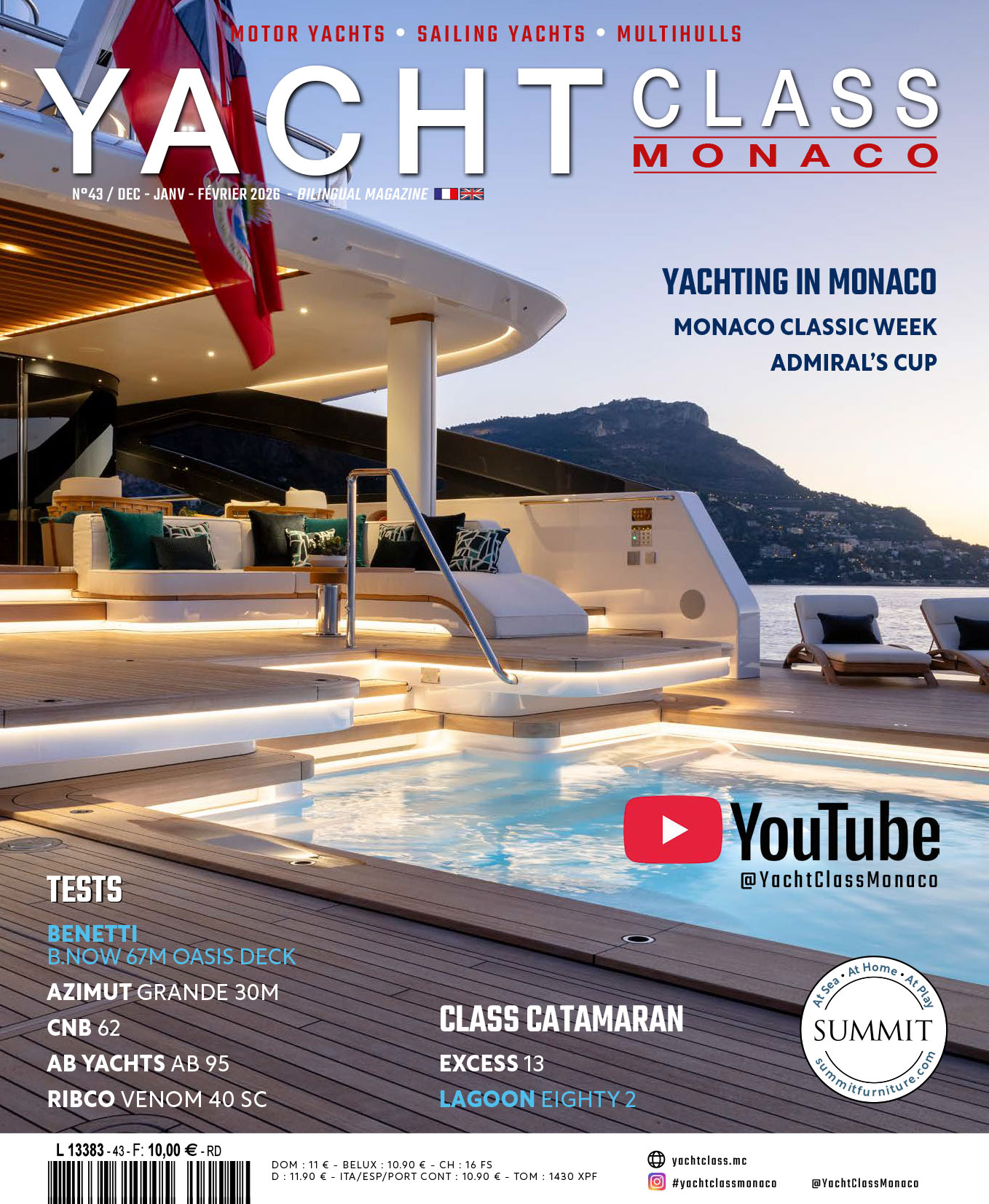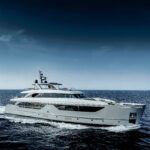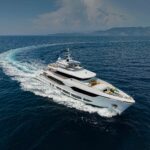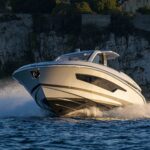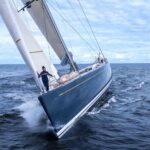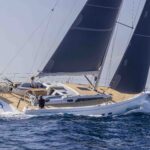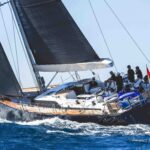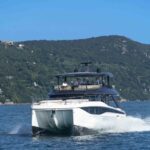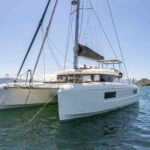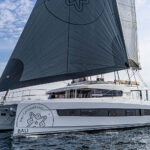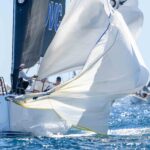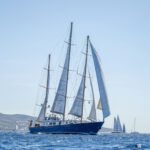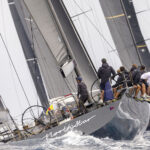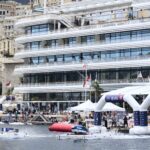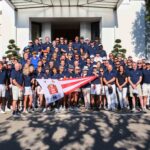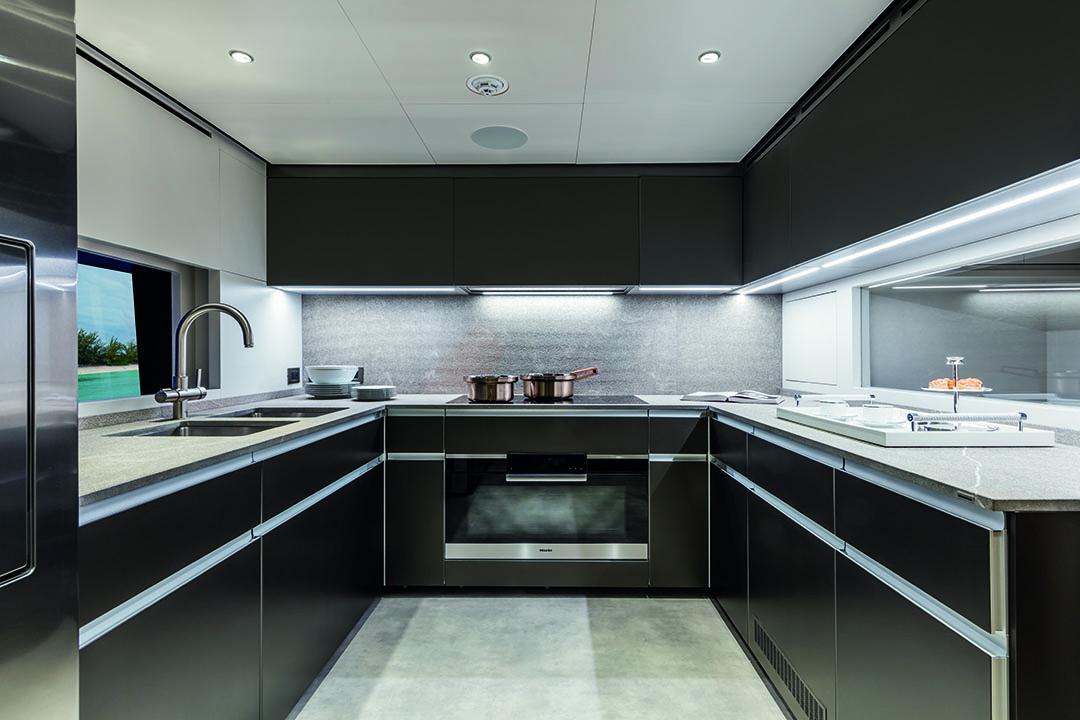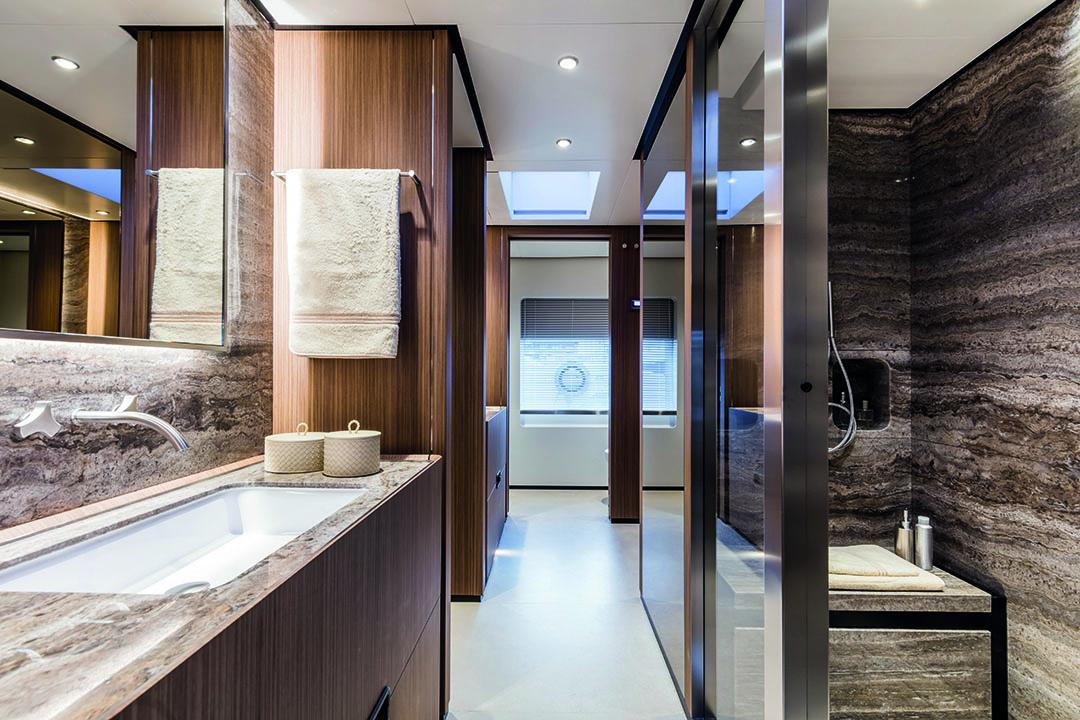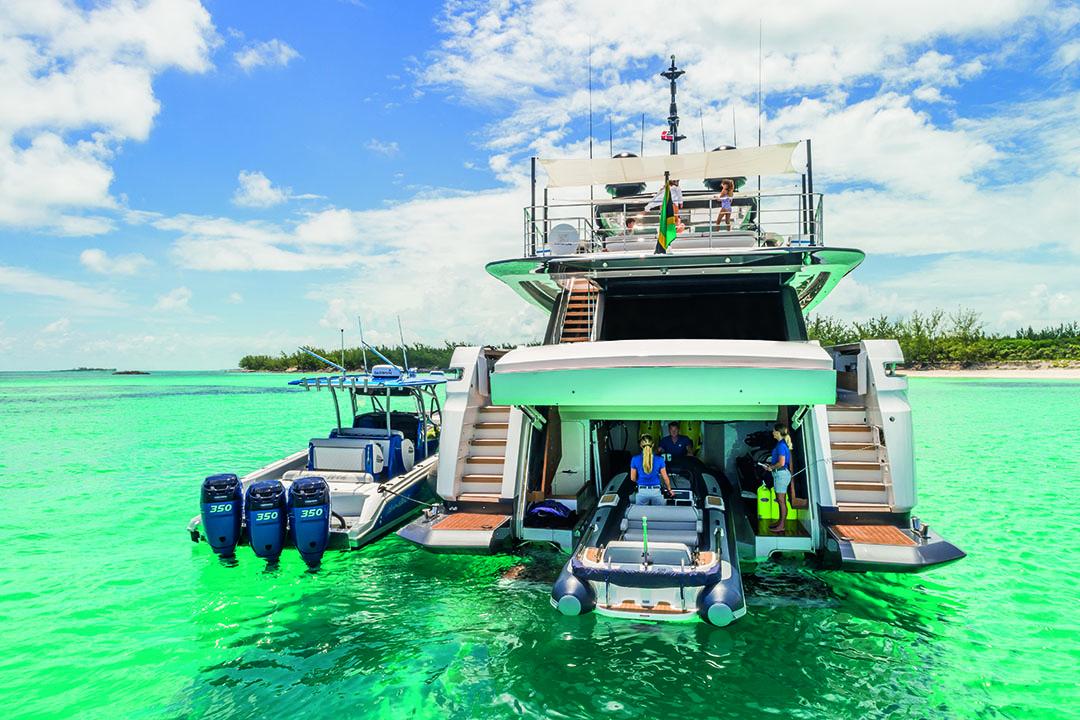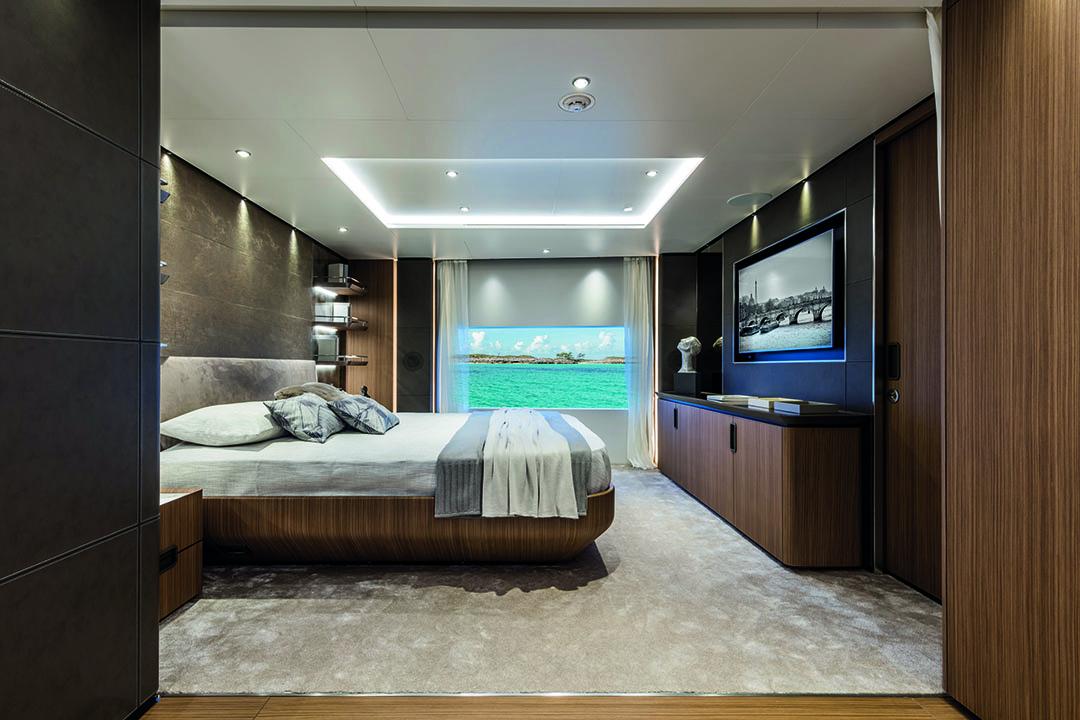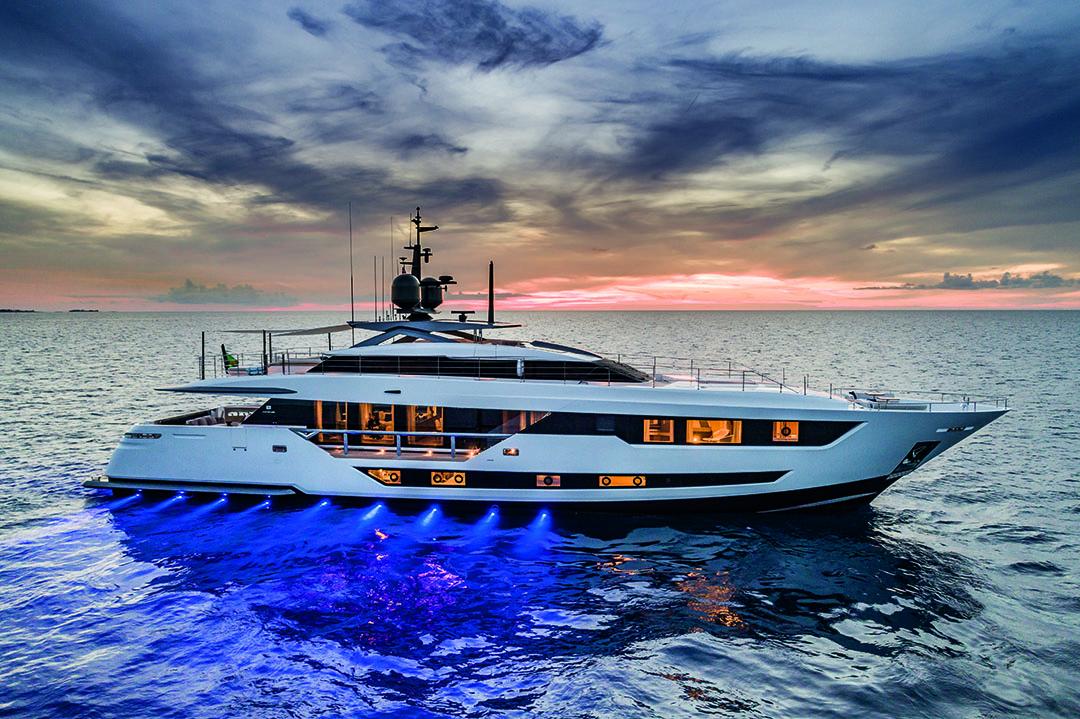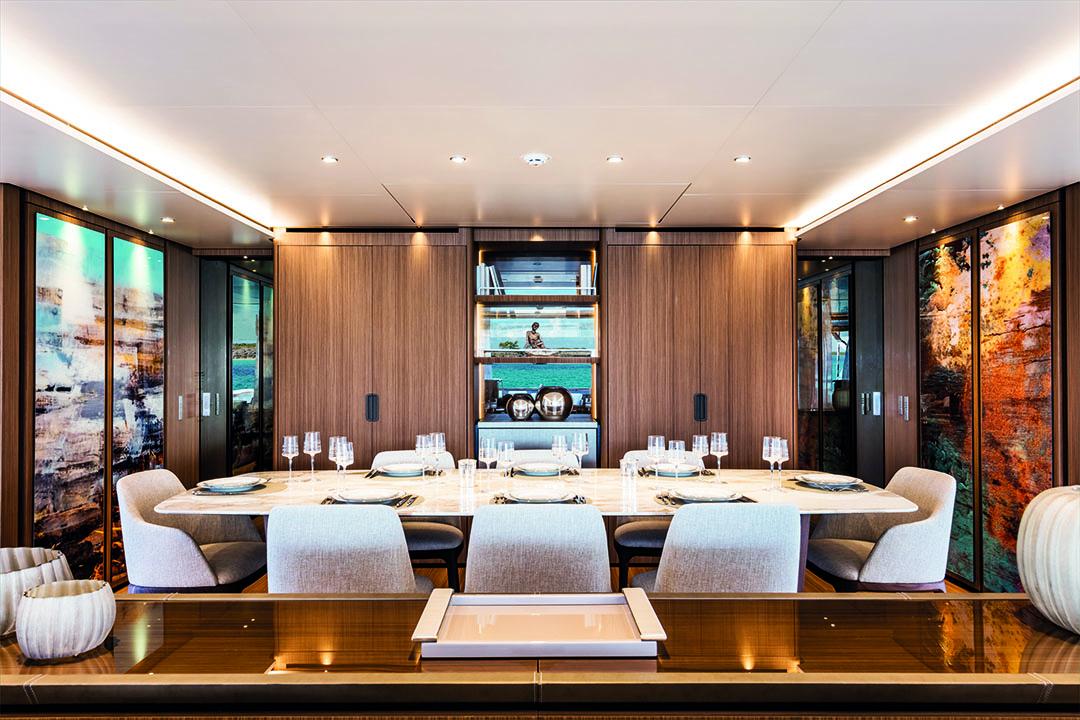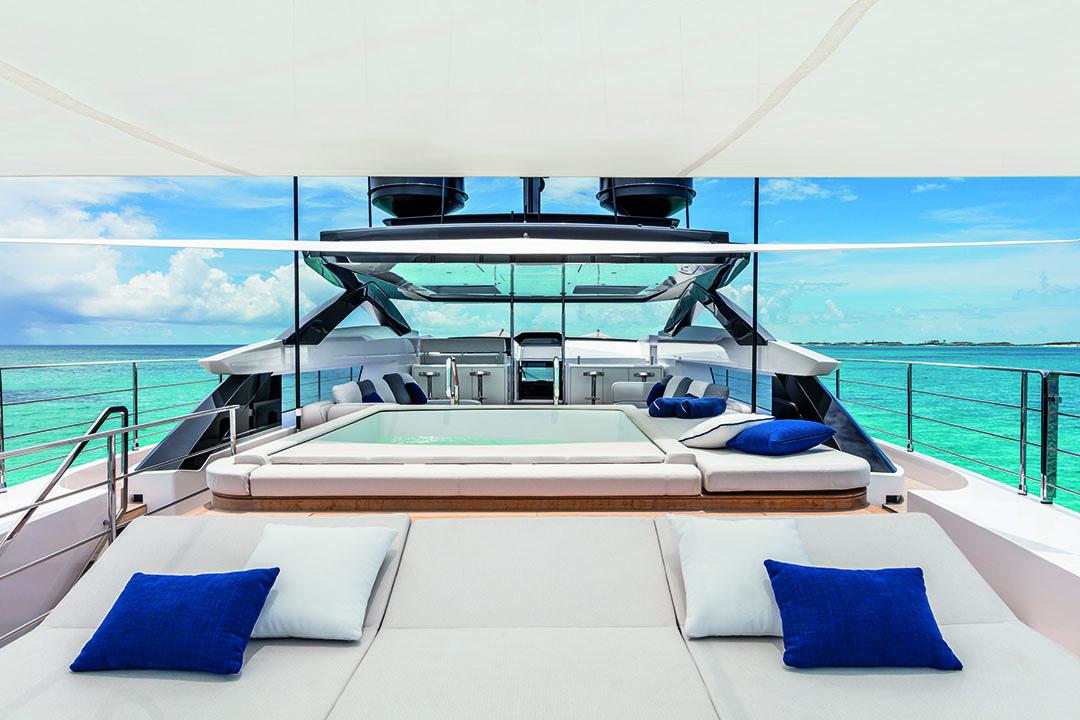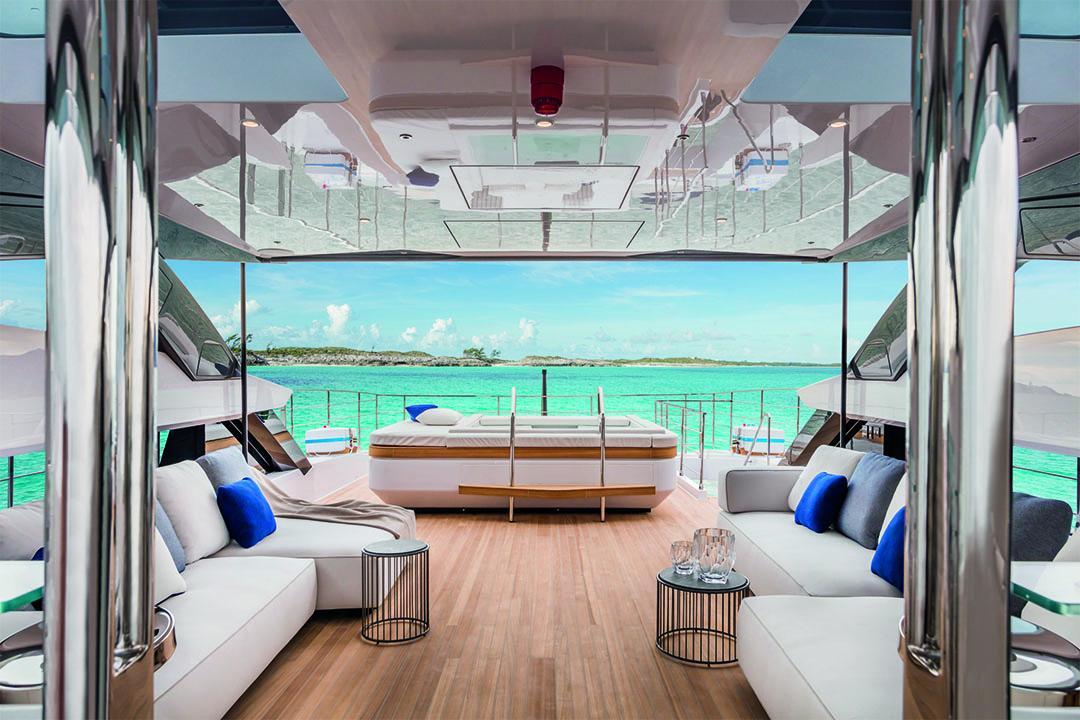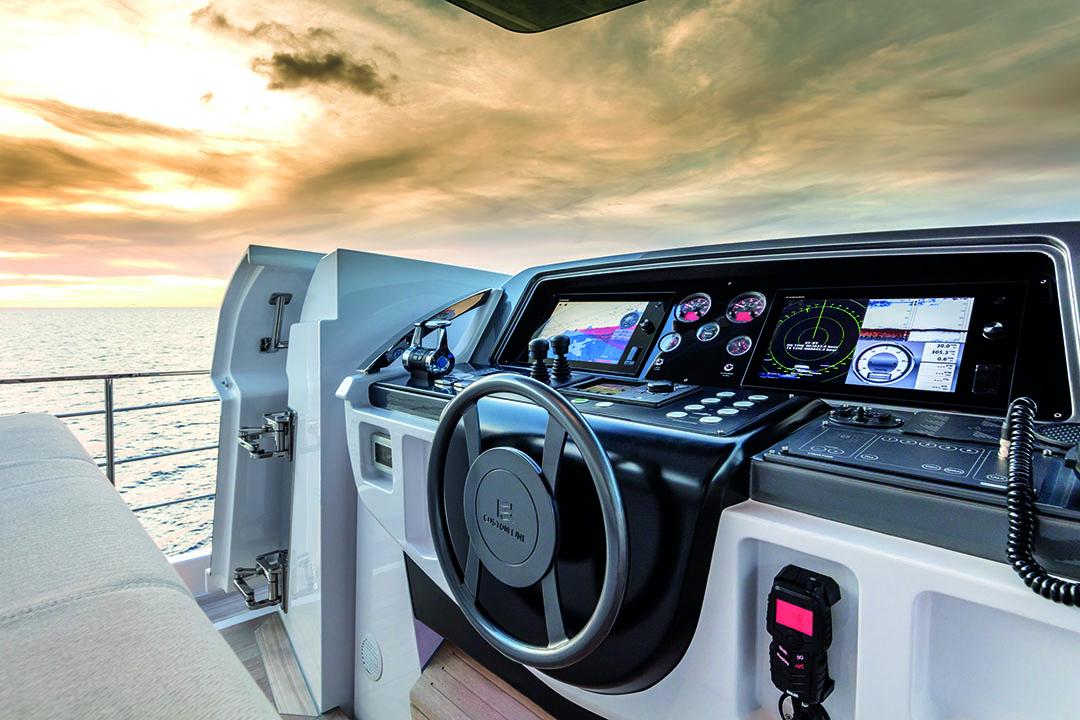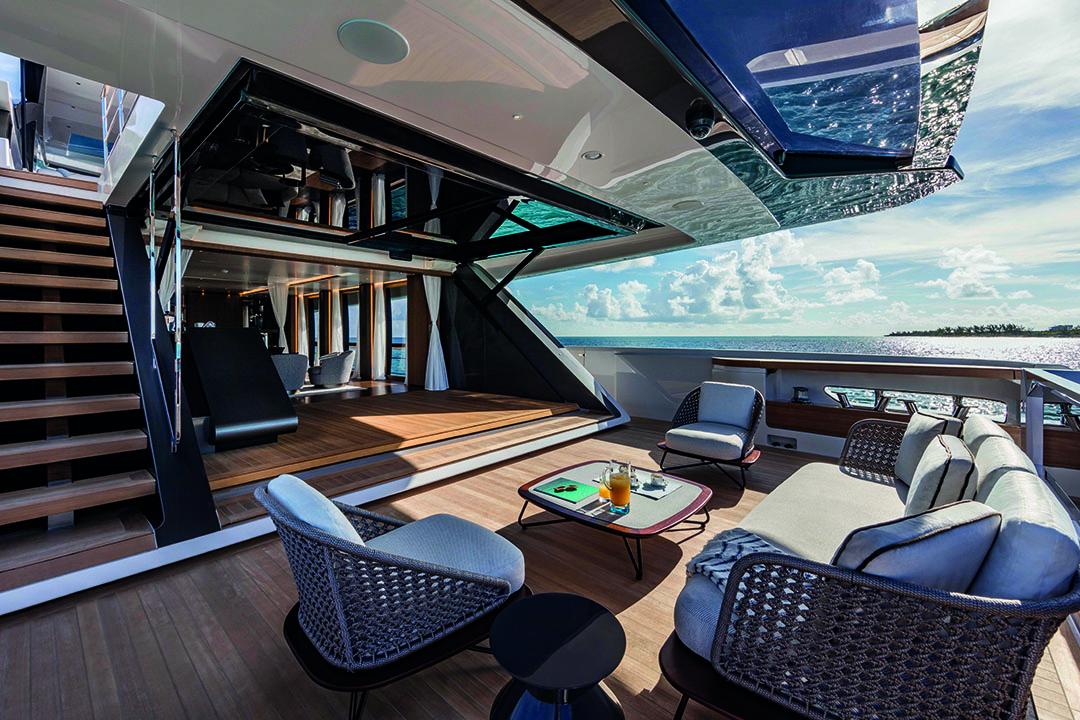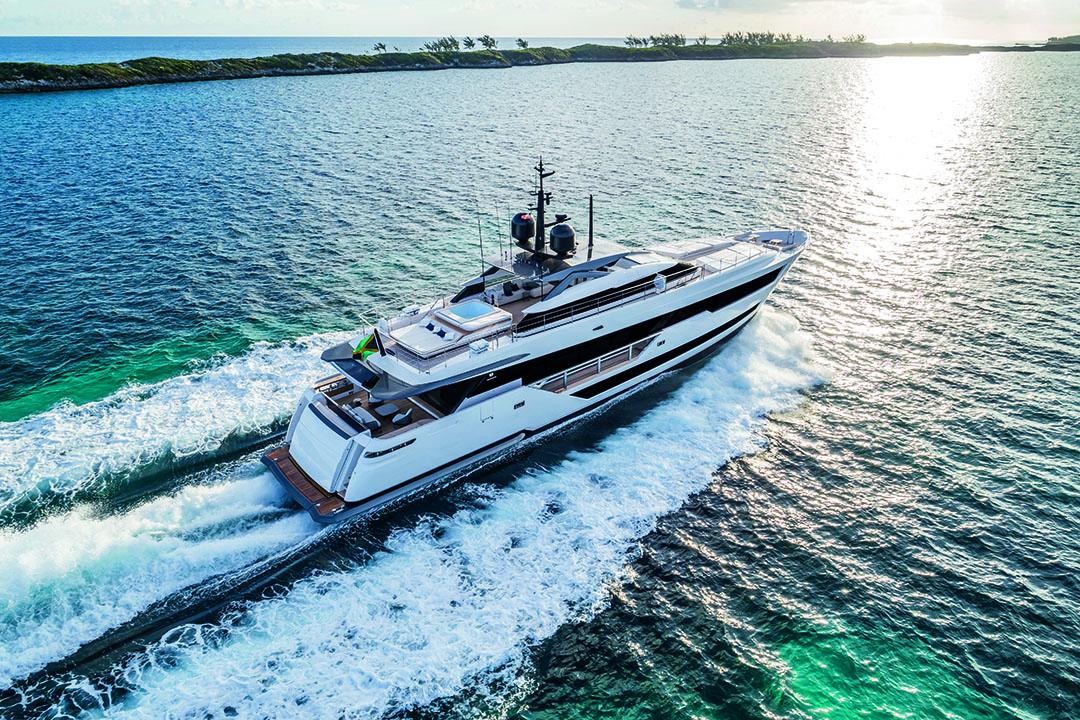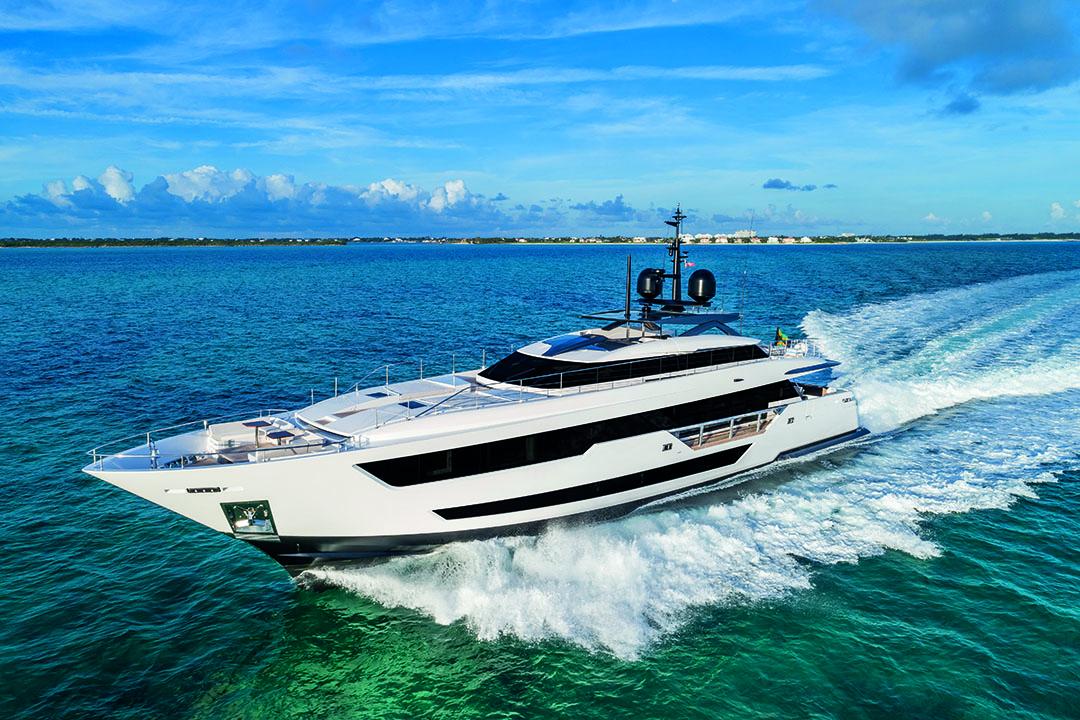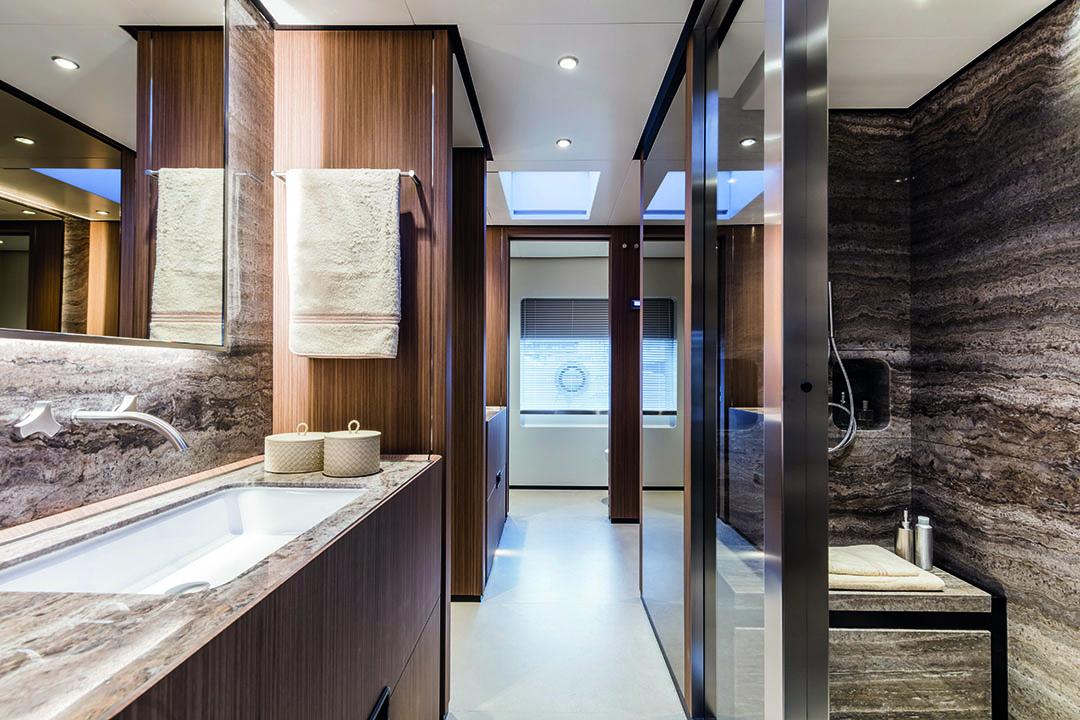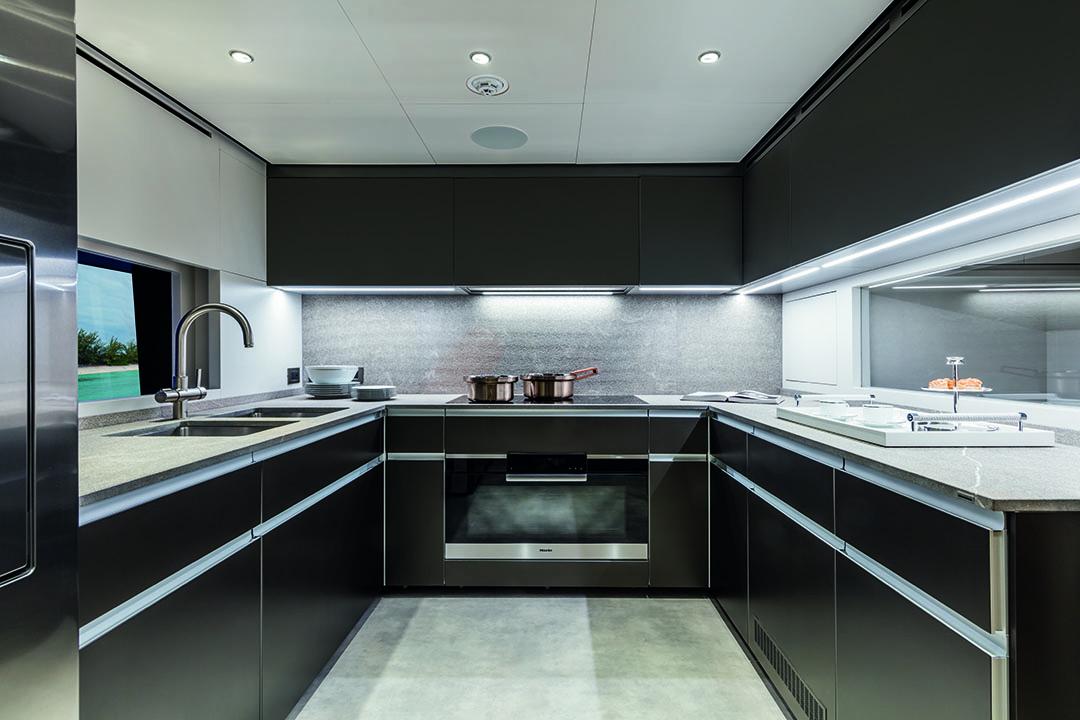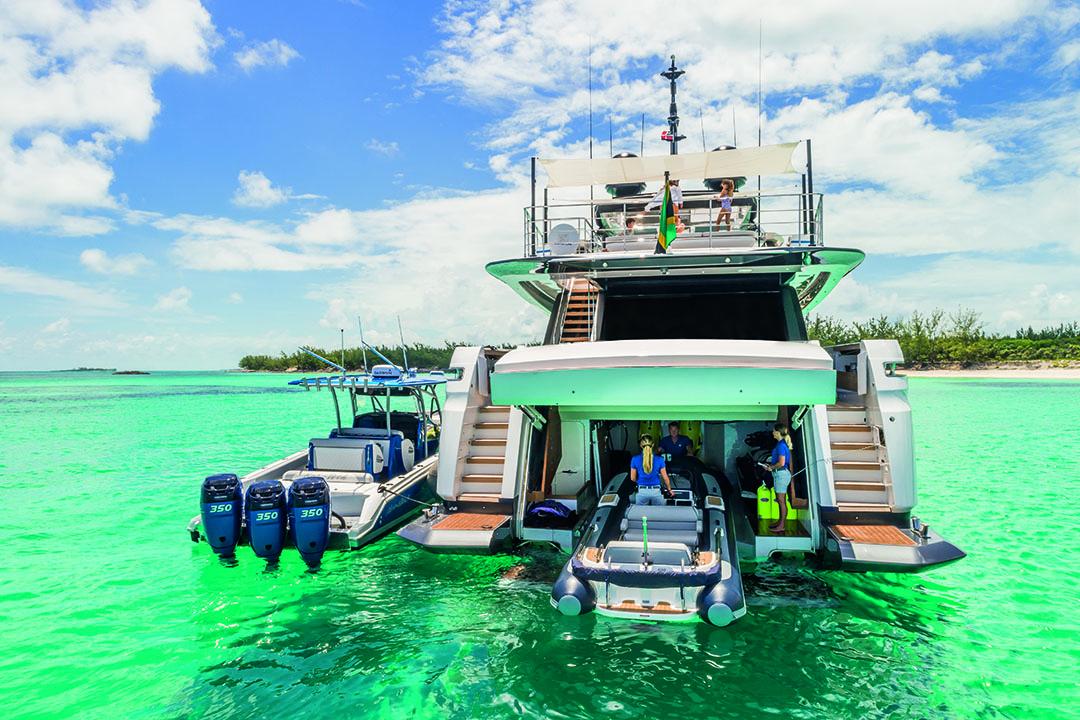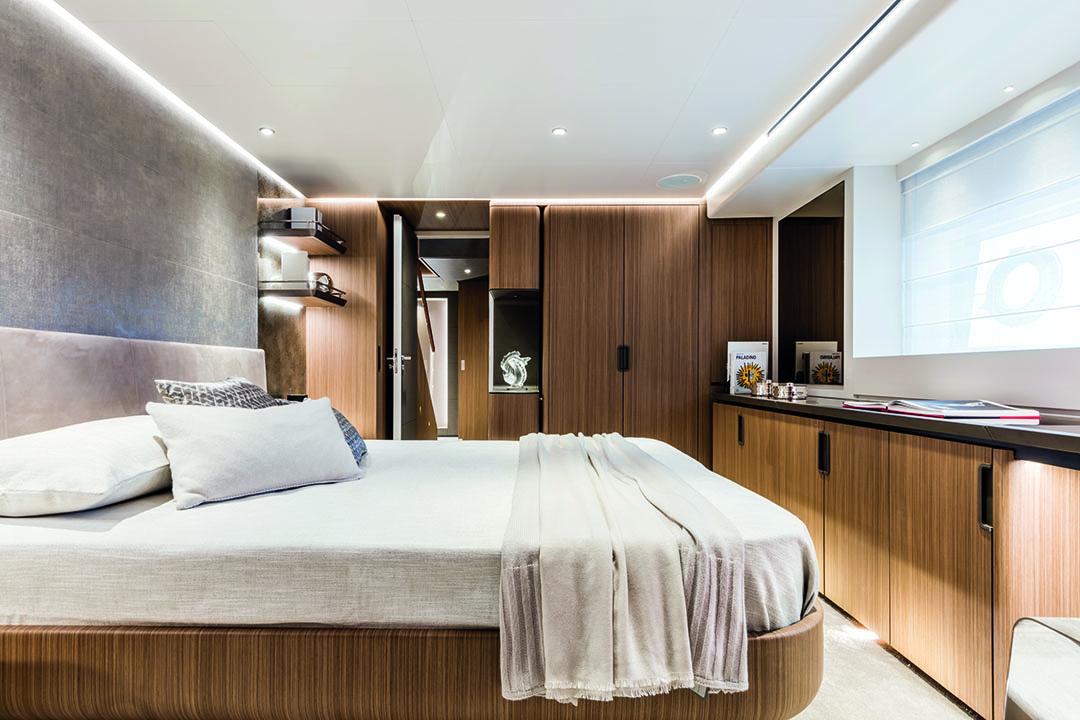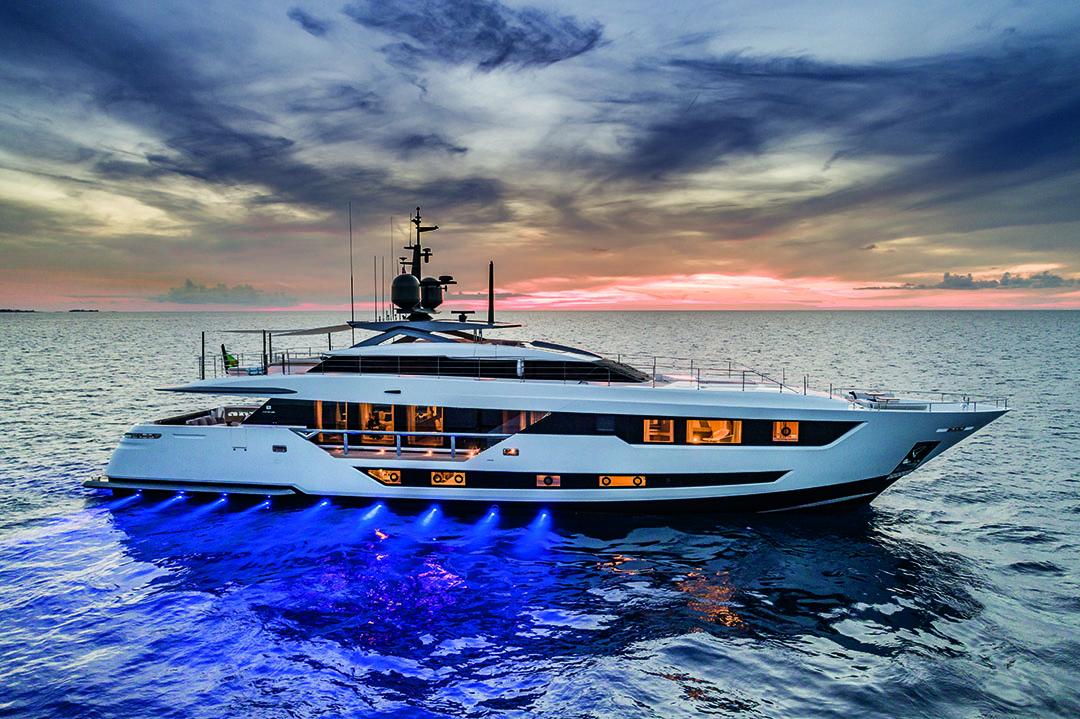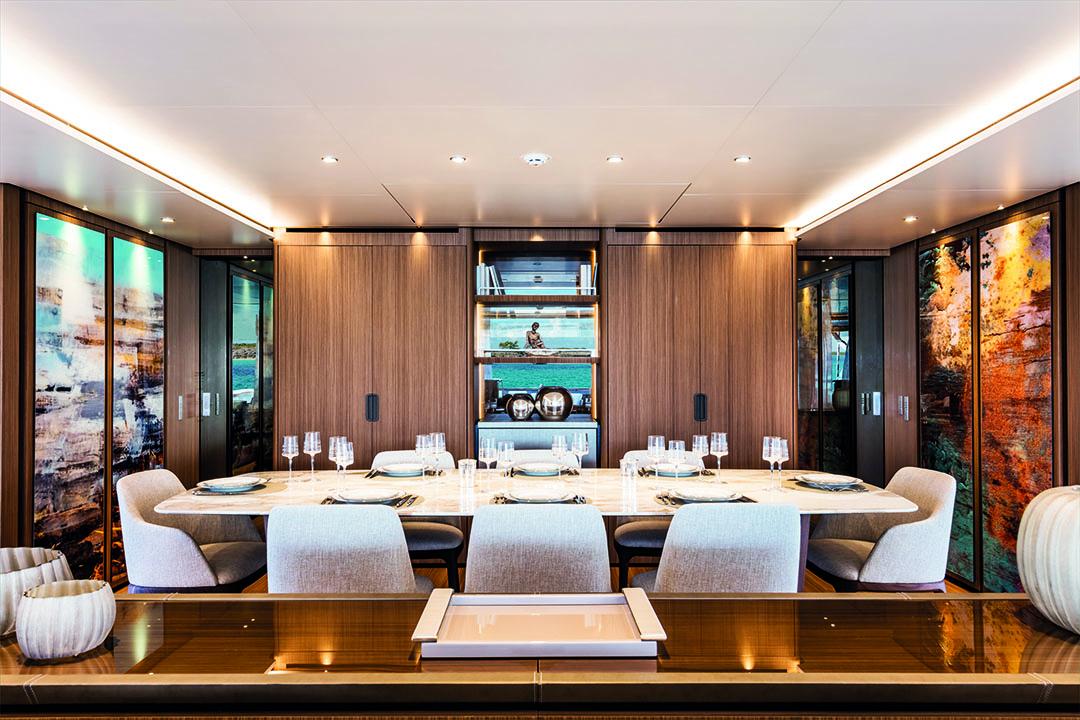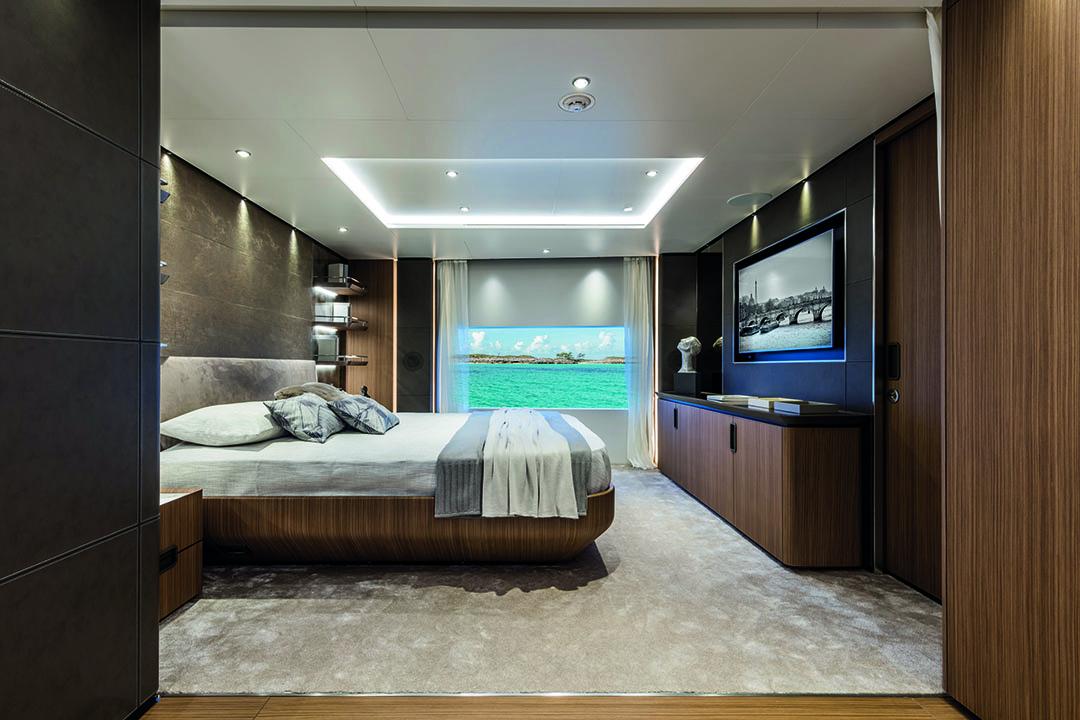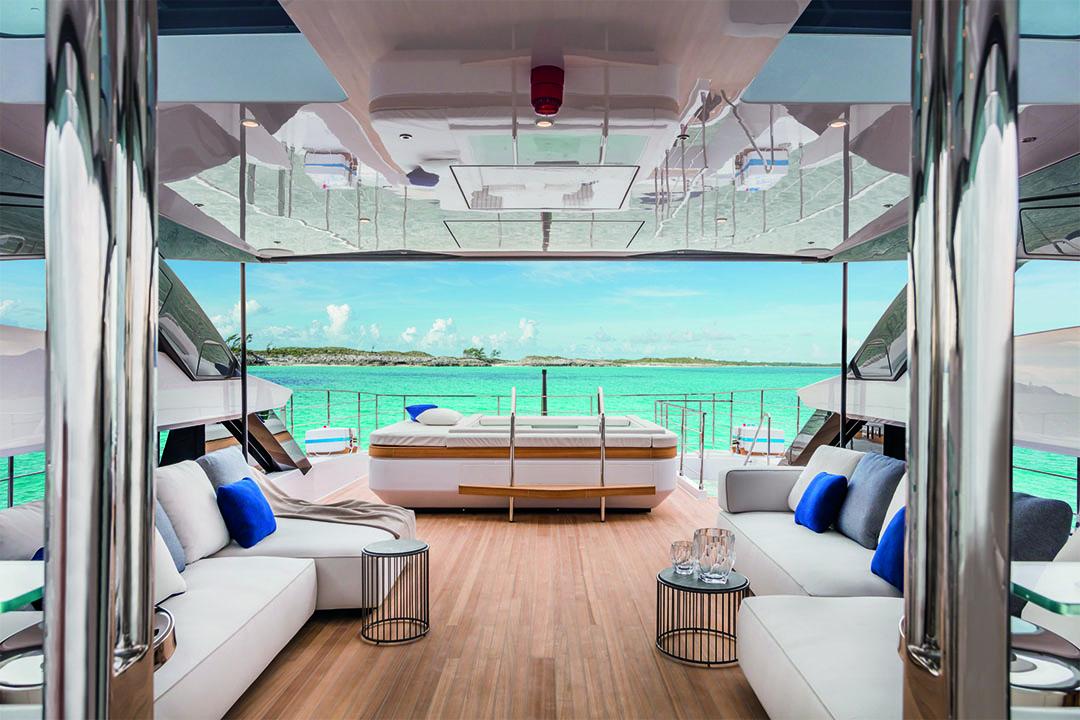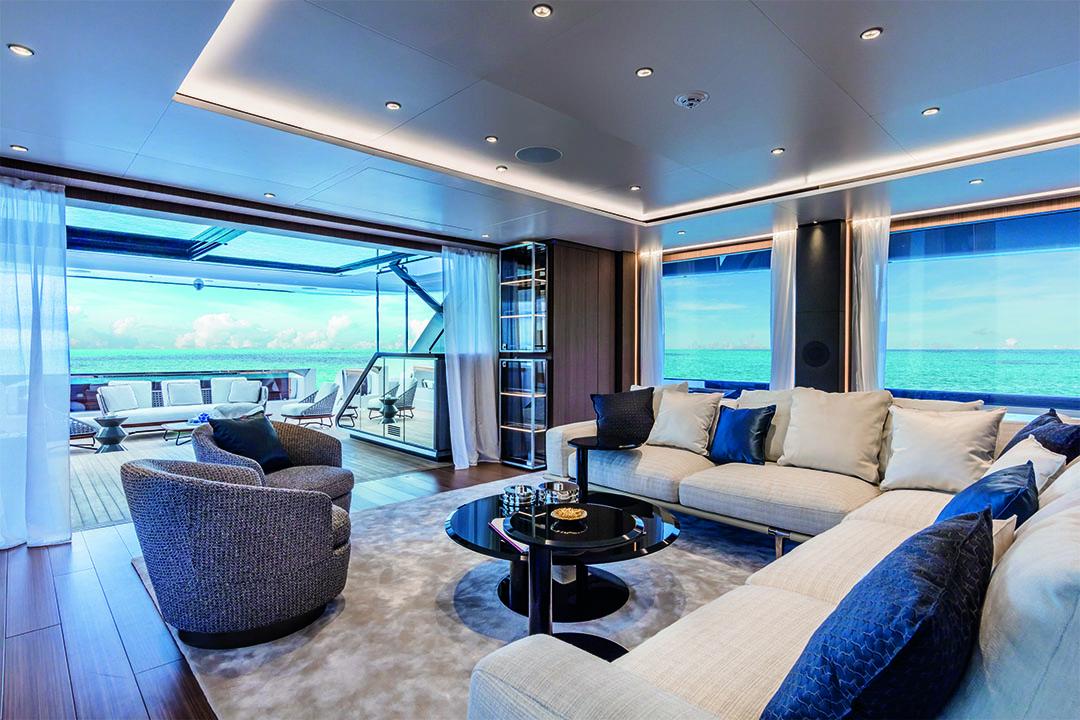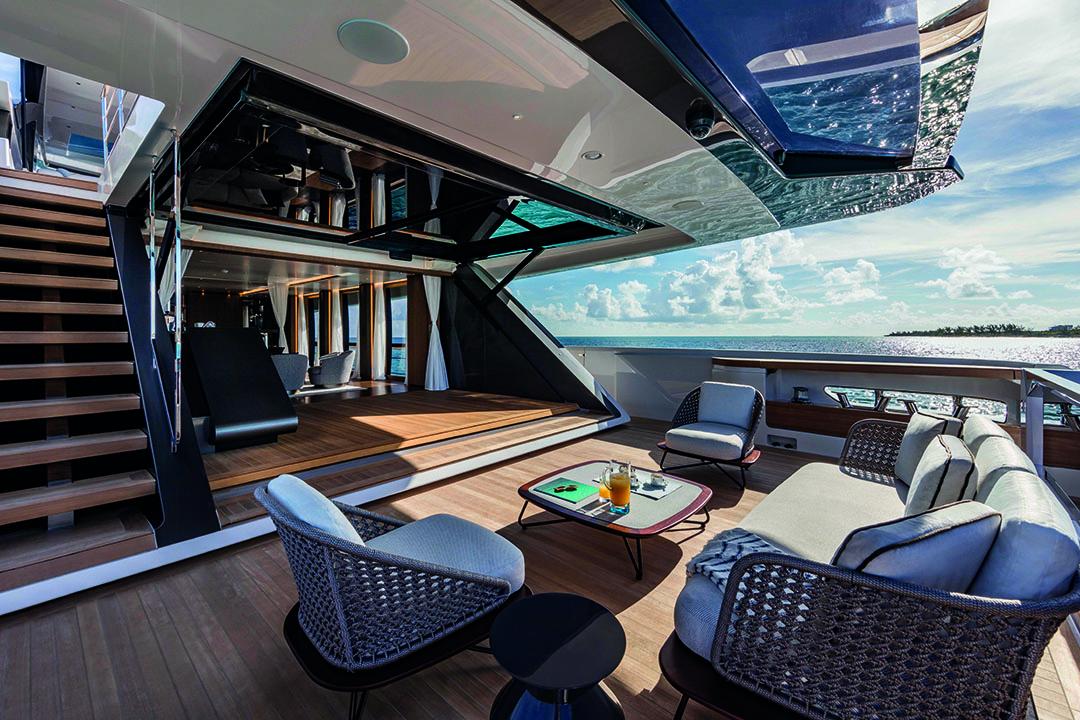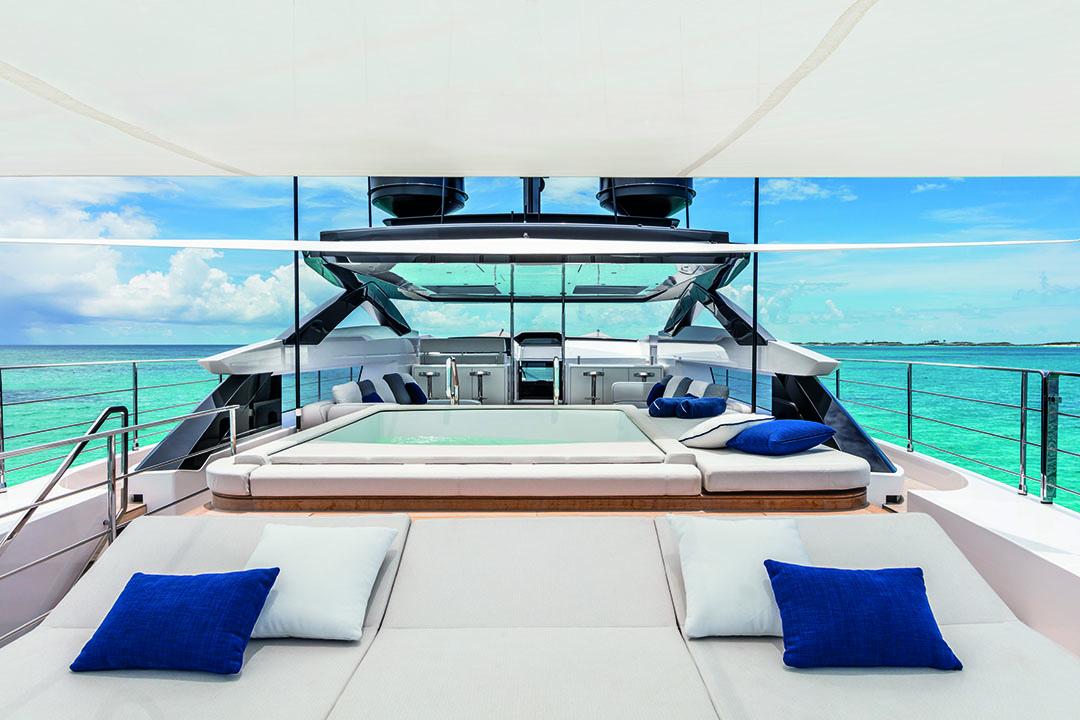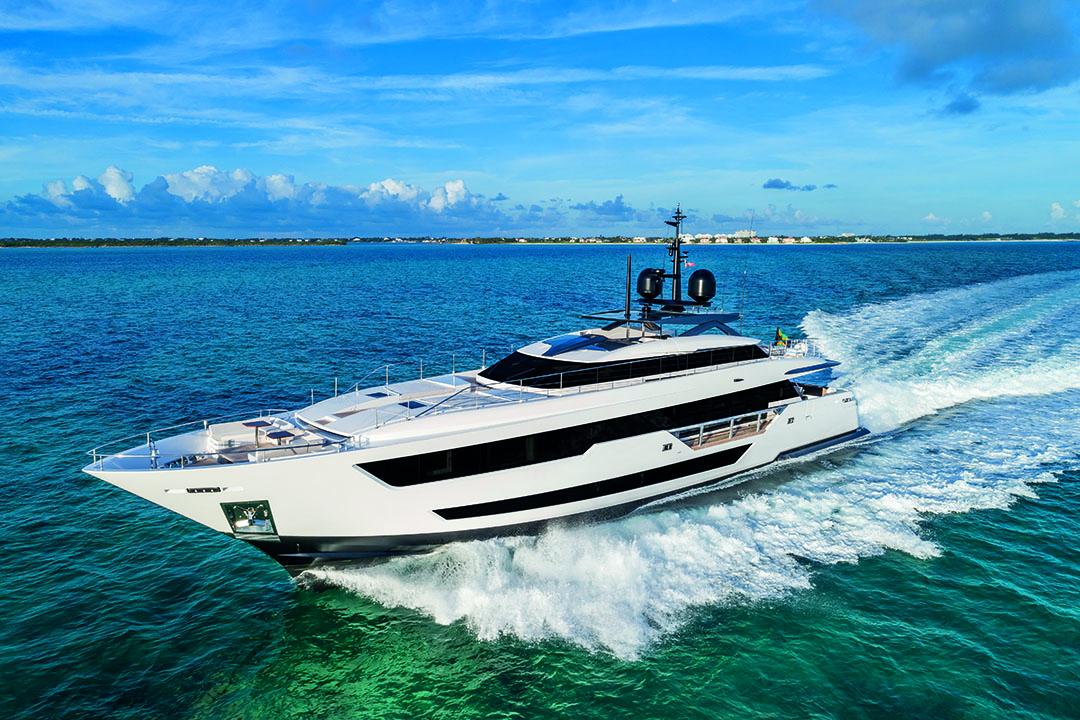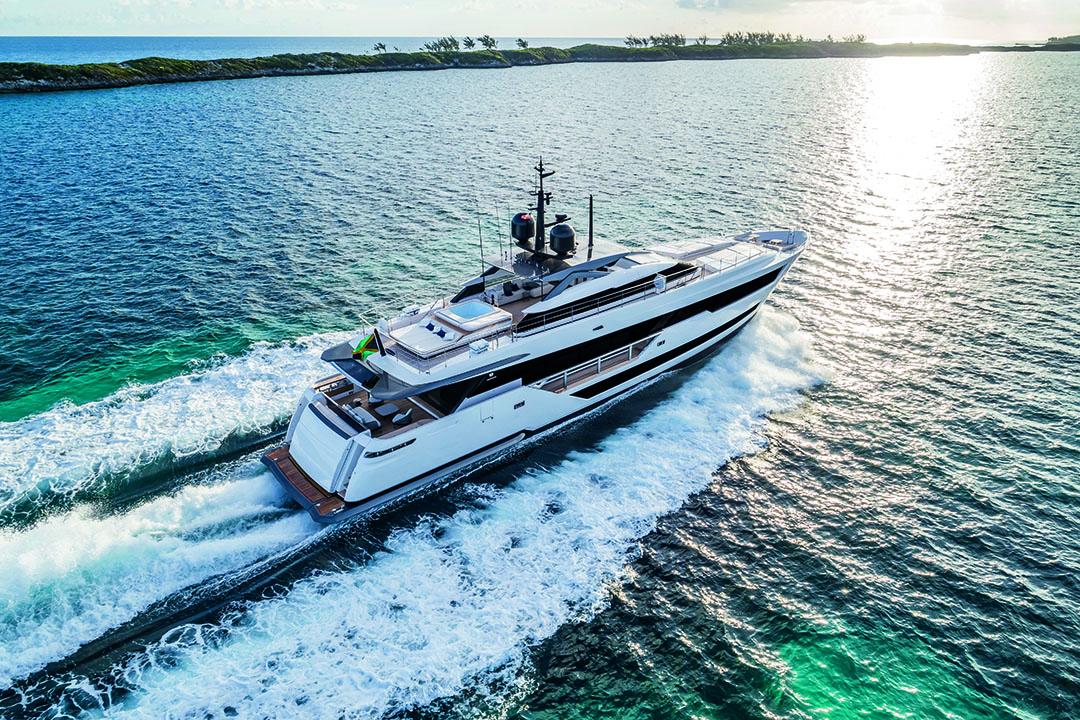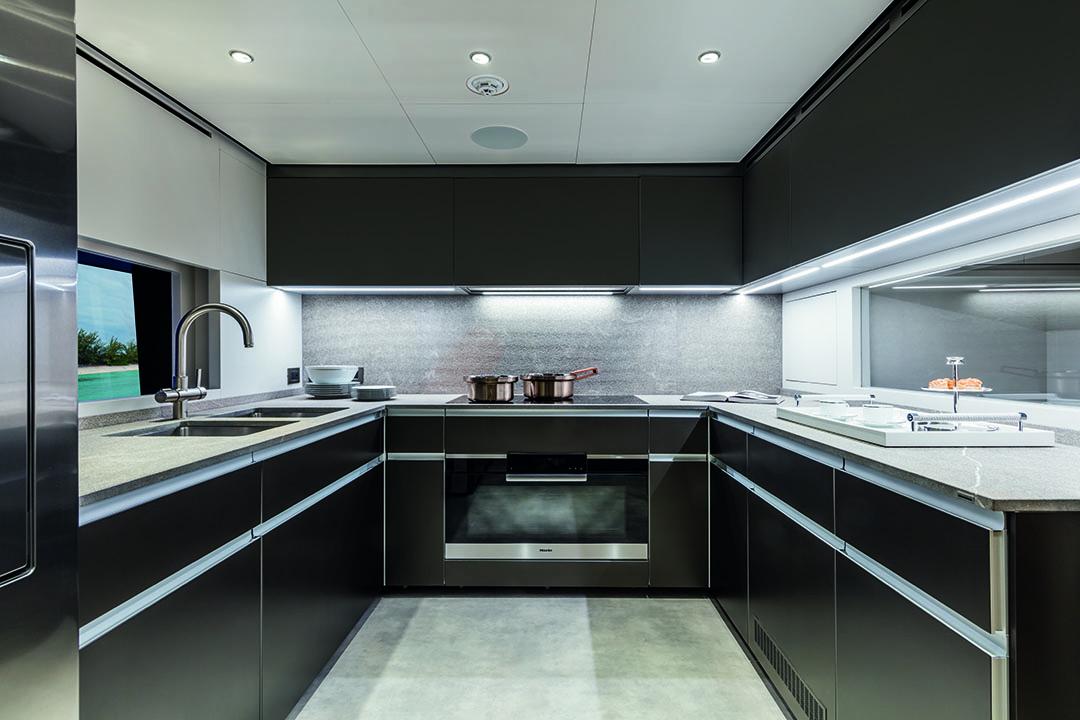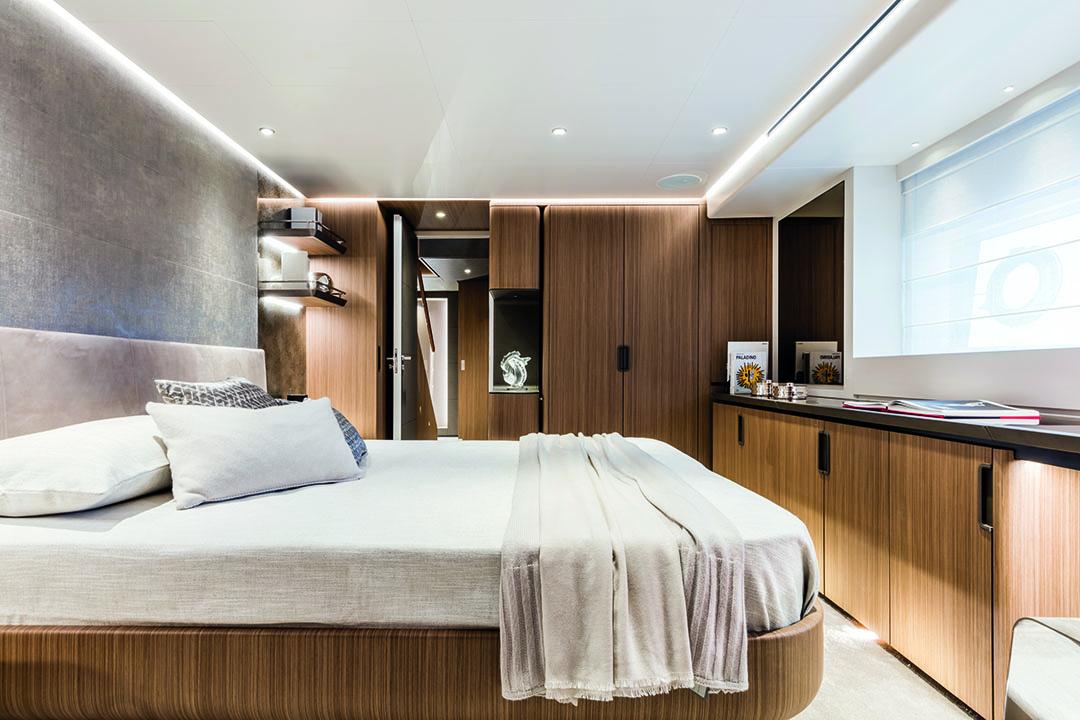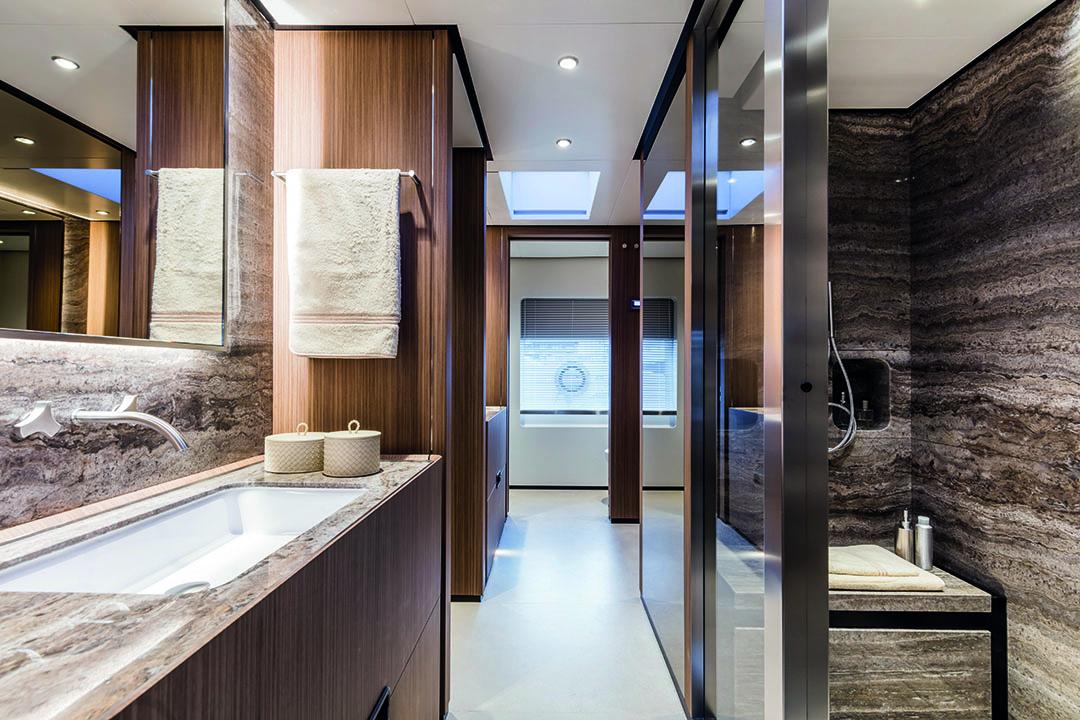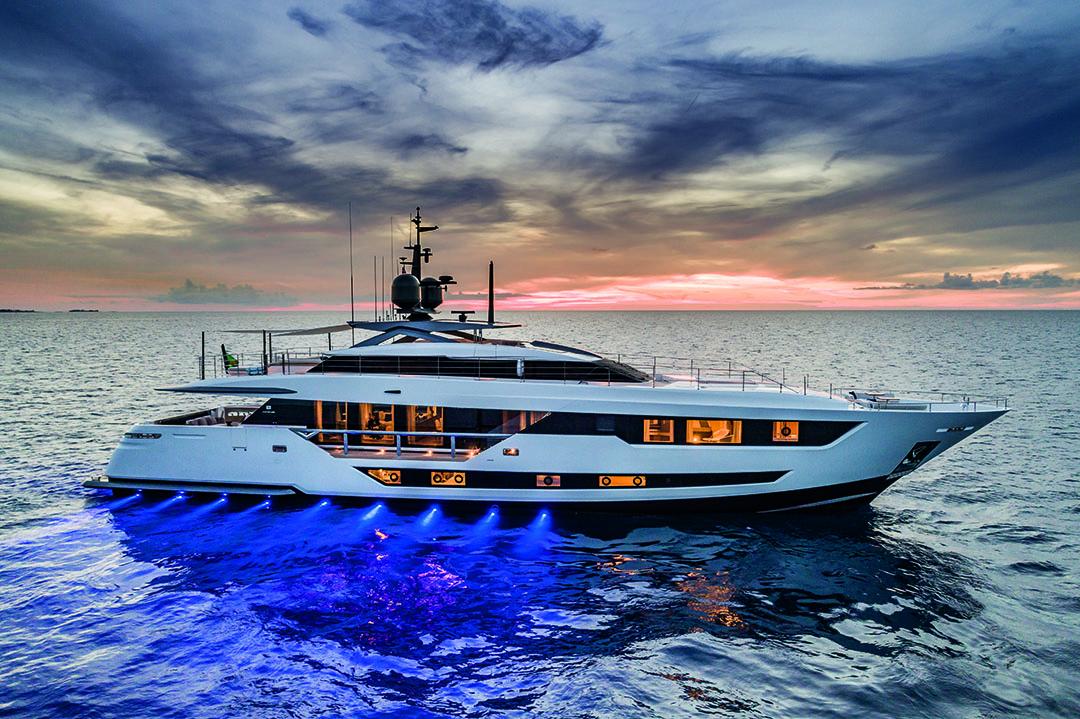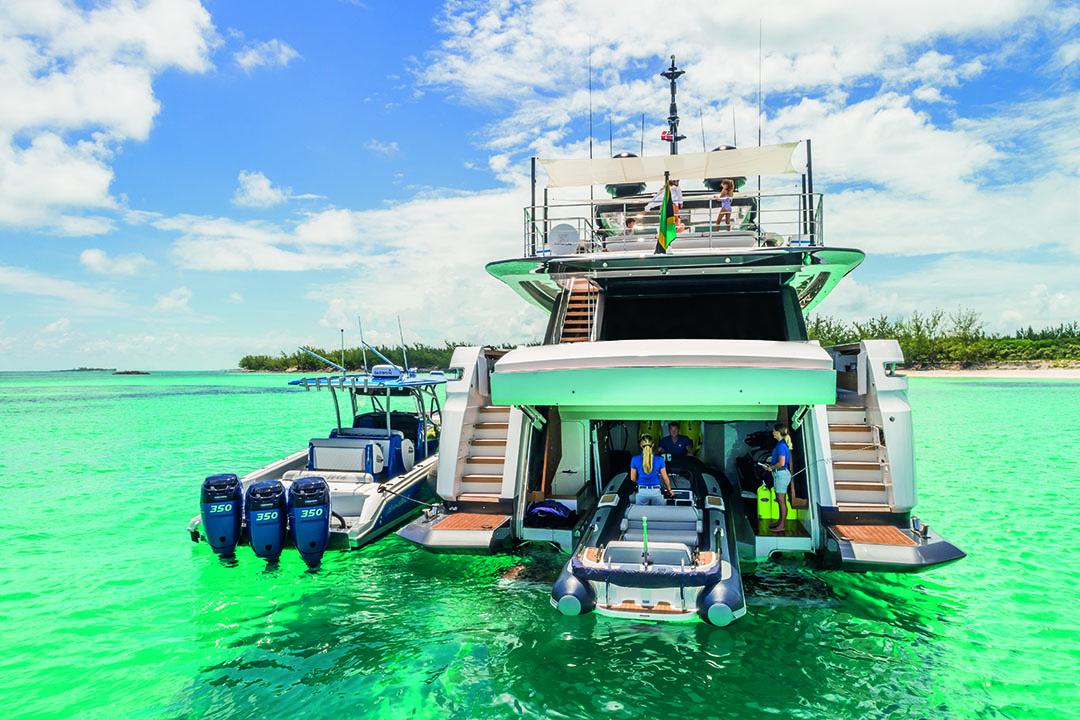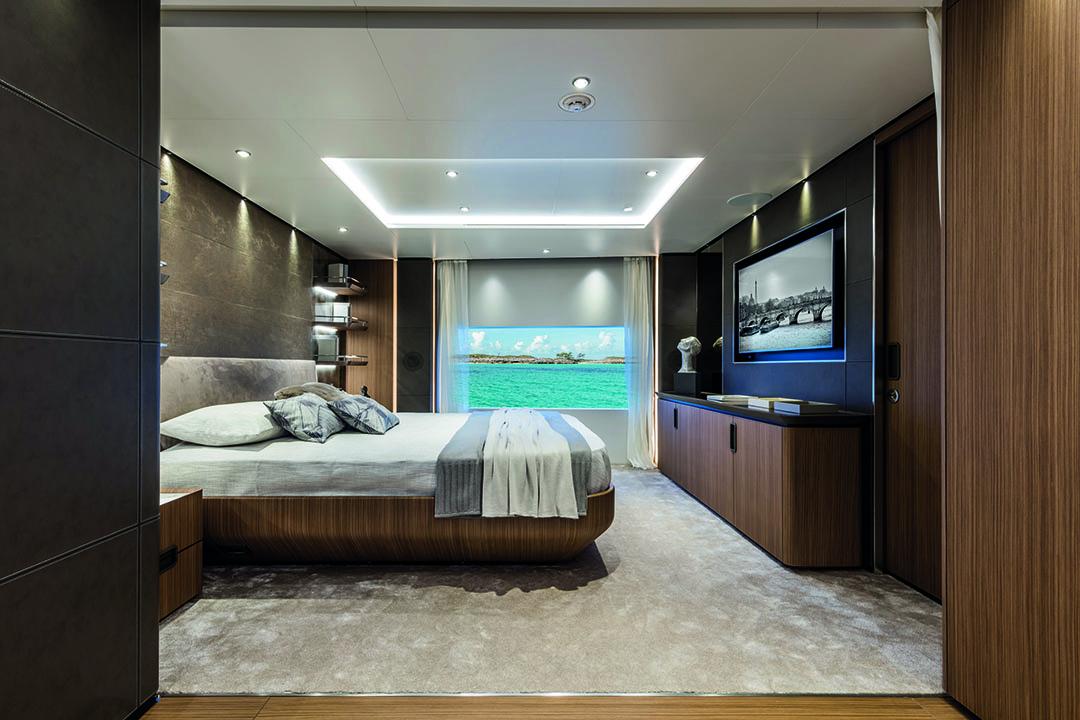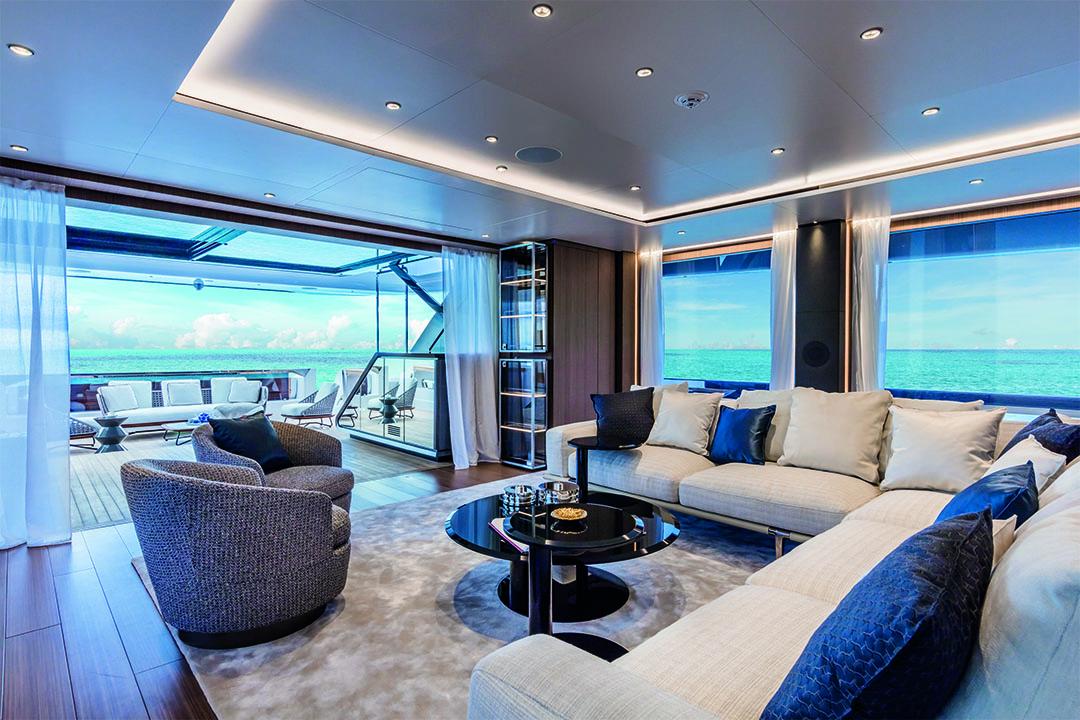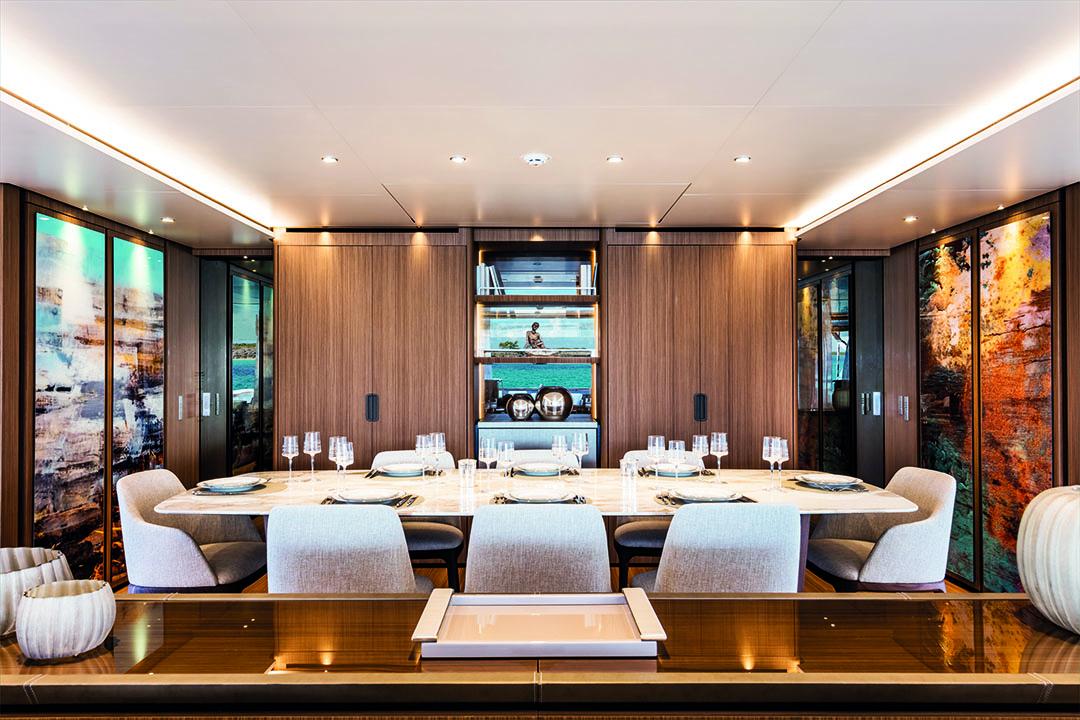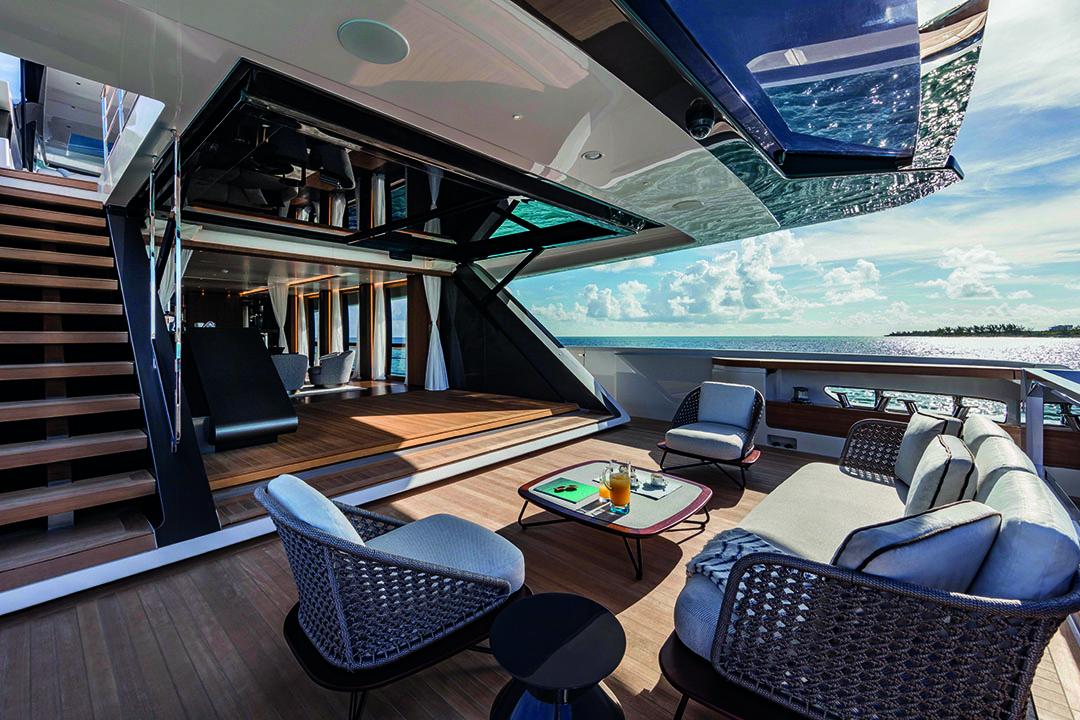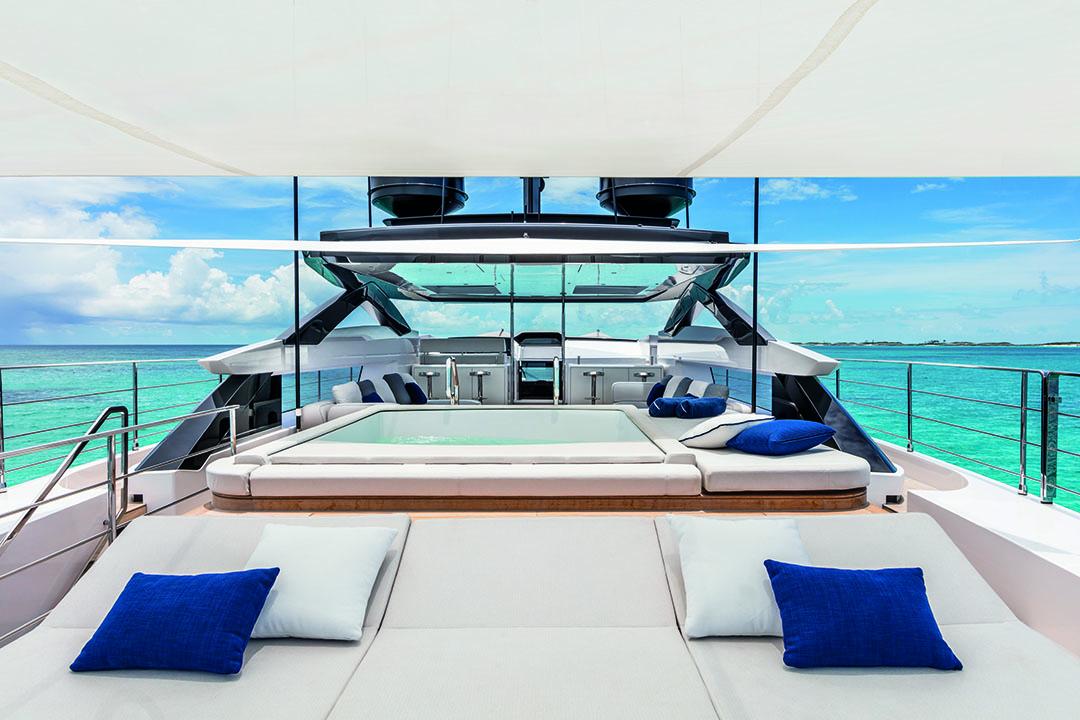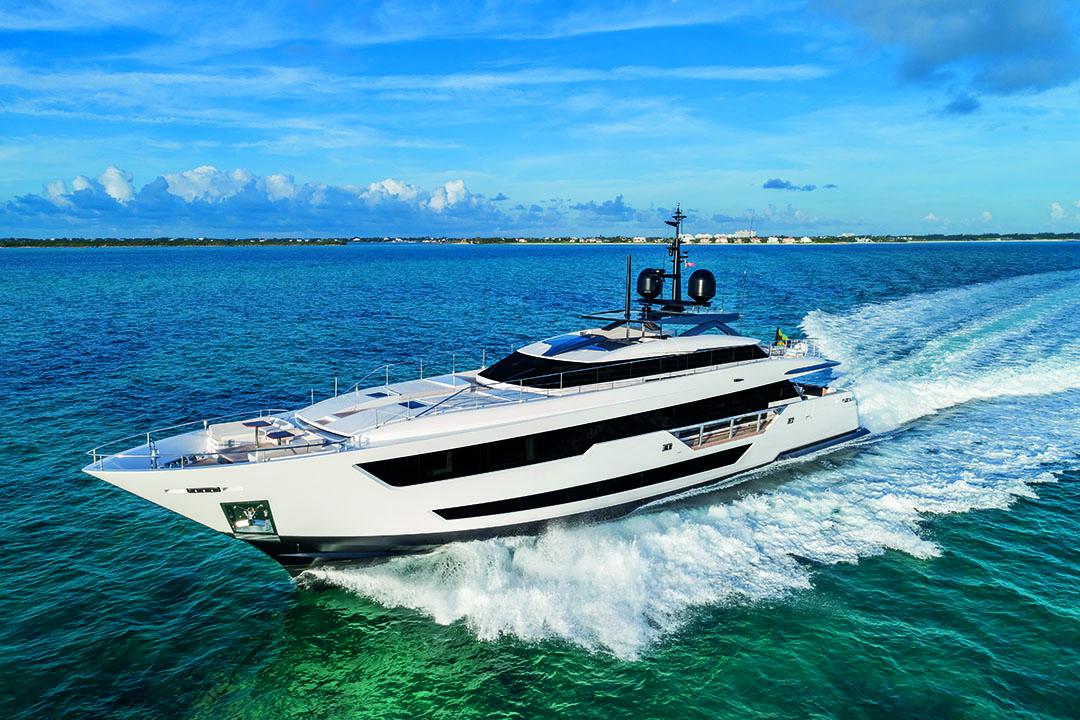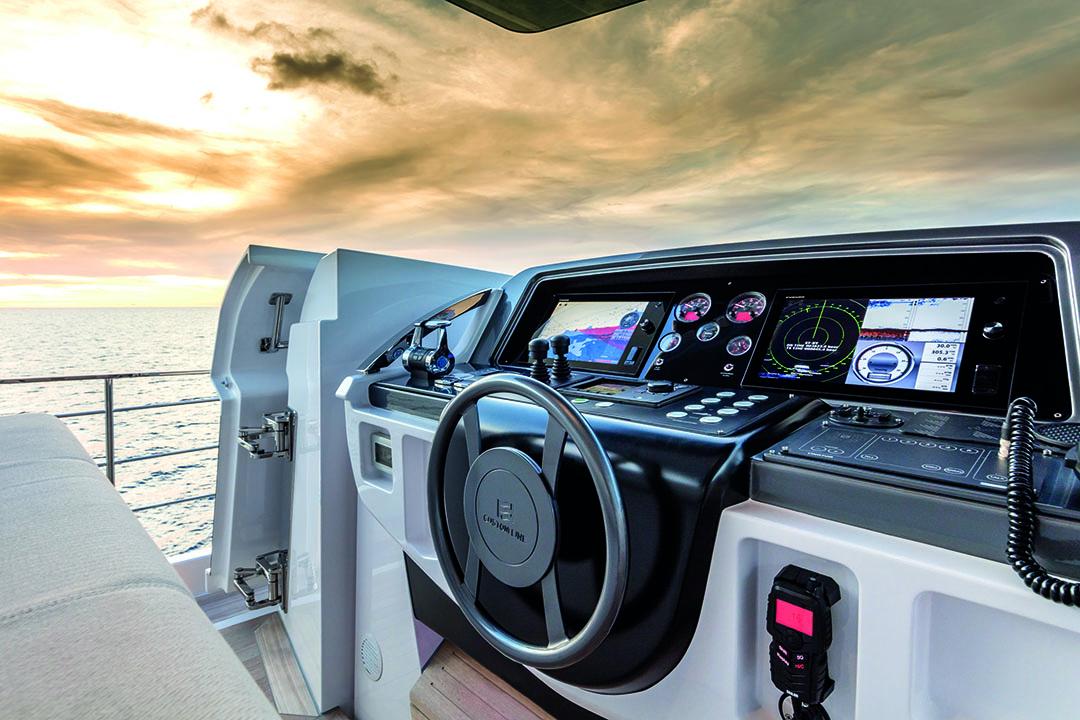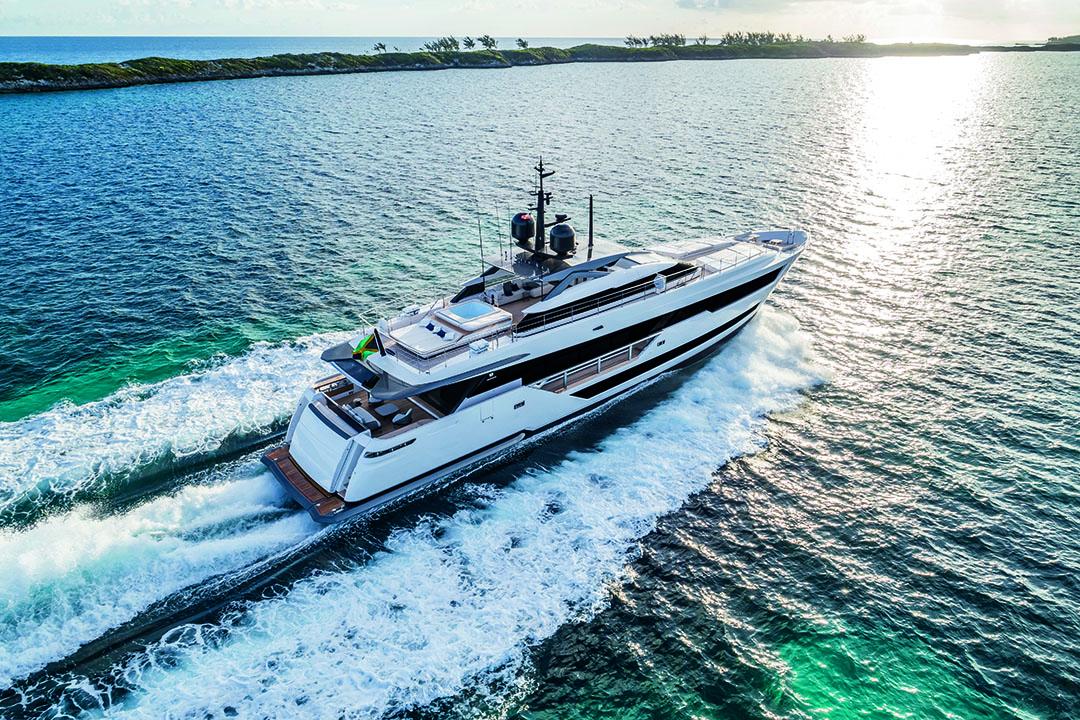Presentation
Yacht Class n°18 (sept-oct-nov 2019)
Custom Line – Ferretti Group
An eye-catching silhouette, a high-level “on-board comfort” for both the living spaces and equipment, place this large Custom Line amongst the leading yachts of its category. The latitude given to the owner for the layout and decoration is also part of the seducing arguments.
Written by: : Philippe Leblond – Photos : All rights reserved
Along the many models of the Navetta series, including the 42 metres jointly launched with the Custom Line 120 last year, the latter is an alternative: slimmer silhouette, higher performance but smaller living space. This 120 foot (actually 126) made a great impression during her world premiere at the Cannes Yachting Festival 2018. She is actually the first Custom Line designed by Francesco Paszkowski, and the least we can say is that her lines do not leave indifferent. The Milanese designer managed to give rhythm to the silhouette, “opening” the polyester hull by emphasizing each of the three decks with long portholes. Despite her size, this 38 metre gives an impression of lightness. And it’s not just a feeling, since this composite construction was made by infusion, and the carbon input has also resulted in weight savings while creating a greater structural rigidity of the hull/deck assembly. The elegant proportions also stem from the stunning balance between the interior and exterior living areas. As we boarded via the cockpit, the power-operated opening of the monumental glass door of the reception area summond us, without further delay, to discover it…
The cockpit dual-system glass doors
This audacity – a dual-system glass door, inclined at 45° and operated by powerful electric motors – is surprising. Even if this unique feature has garnered Ferretti Group an award at the Boat Builder Awards, in Amsterdam, it failed to impress us. Indeed, when closed at 45° angle, it creates an aesthetic volume (especially from the cockpit)… Indeed, the technical prowess – raising horizontally 1.5 ton of glass and stainless steel by only the force of cylinders – does not go unnoticed, but the kinematics causes a substantial loss of floor area in the saloon, since when it is closed, you find yourself stranded in front of inclined panel. In addition, it cannot remain open when the boat is sailing at more than 12 knots… Fortunately, its dual system opening also has a classic mechanism with two sliding panels. For our part, we made a U-turn to enjoy the beautiful perspective offered by this reception area of about 60 m2, harmoniously shared by the sofas and rotating seats (Roche Bobois) and the large marble dining table that can welcome eight guests (ten by huddling together). The small bar is strategically situated at the entrance of the saloon so that both the guests settled in the indoor lounge or in the cockpit one can be directly served. The place is generously flooded with natural light thanks to the large, full-height windows. Forward, the port side corridor leads to the galley, with a sea view. As for the starboard one, it leads first to a vestibule where is located the access to the guest cabins belowdecks. After the toilets, we enter the master suite. It first opens onto a large dressing room and a desk, then leads to the cabin itself, which features wood or leather-clad partitions and accommodates a boudoir, a king size bed in the direction of travel, and a large en suite with plenty of marble. About seven metres separate one bay window from the other, since thanks to the absence of walkways at this level, the master suite occupies the entire width of the boat. On the lower deck, guests are also well looked after in their cabins bathed in light by large hullside windows. There are two for VIP, with double bed, and two for guests or children, with twin beds. As it should be on a yacht of this standard, all four cabins are en suite. As for the crew quarters, accessible via a separate staircase, they are located further forward, and offer a saloon/galley and four cabins for seven crew members, all with a shower room. The captain enjoys a double bed cabin.
A touch of asymmetry
Strolling about on the different deck levels allows to assess the original architecture design of this unit. In the same way as the Sanlorenzo SL102′, albeit to a lesser extent, the new Custom Line is asymmetrical. The two staircases leading to the upper deck do not have the same starting point. One comes from the portside of the cockpit, the other from the starboard walkway near the wheelhouse. In such a way that heading back to the main deck requires to cover all the walkway running around the upper superstructure. Surprising. In any case, the outdoors generate a sense of well-being, be it on the foredeck vast sunbeds, or more towards the bow, on the outdoor lounge. In between, a tender garage blends in perfectly with the deck line. In addition to the large aft cockpit, from which two staircases lead to the swim platform that becomes a beach club once the transom is open, the tender launched and the parasols deployed, the ideal place to relax remains the upper deck, accessible via the two staircases above-mentioned and the one coming from the raised pilot house. Under the hard-top, two long and comfortable sofas are fitted between the bar/grill and the jacuzzi with a triple sunbed. Note that the entire deck can also be shaded by large awnings… Those interested by the navigation will stay with the captain, at the upper helm station, where an offset console gives him a better control of delicate manoeuvres.
Two key words in navigation: comfort and silence
Gently, the Custom Line 120’s long hull got out of her narrow mooring at the Cannes Yachting Festival. The large twin V16 MTU generating 2 638 hp each are almost inaudible from the cockpit to the upper deck. It is true that the Ancona-based yard has put every effort into sound insulation thanks to additional “layers” in the partitions and floors, to minimize the noises of the engines and generators. And the result can be seen in our readings in navigation: 54 dB in the living room and 47 in the master in slow motion, and at cruise speed (2 200 rpm), 68 dB in the living room, 61 in the master. The other satisfaction was the low vibration level we felt no matter where we stood on the yacht, even when we pushed the throttle forward off the port of Cannes. Gentleness is also the key word when evoking this sea trial, be it for the controls, during engine speed changes or when passing through a big choppy sea and nearly one metre of residual swell. The same applies when crossing the wakes of other large units towards Théoule-sur-Mer, even at a maximum speed of 25.4 knots. This figure is in line with the 25 knots announced by the yard, and achieved with three-quarters of a diesel tank (12 500 litres), half the water tank (1 500 litres) and about ten people on board. The hull silently cut the Mediterranean with no apparent effort, effectively deflecting its bow wave. It should also ensure outstanding comfort in rough seas, thanks to its electro-hydraulic stabilizers. At the fast cruising speed of 21.5 knots at 2 200 rpm, the comfort is absolutely remarkable. If the owner is not in a rush, reducing the speed allows a greater range. At 16.3 knots (1 800 rpm), the Custom Line 120 can sail more than 500 miles without refuelling. At 10 knots, she can even triple this distance! Back in the Vieux Port of Cannes, the captain attacked his manoeuvre. With an idling speed at 6.5 knots, no time to “rest” when using the reversers, since the torque transmitted to the large diameter propellers by the German diesel engines is phenomenal. But the controls are soft and precise, the helmsman barely had to give a little “kick” ahead to the bow thruster (there’s also one at the stern) to moor unhindered.
For Custom Line, there is little doubt that this first collaboration with Francesco Paszkowski, which was conclusive both for its work on the exterior style and interior architecture, should be continued. This large composite yacht conveys an impression of luxury and class reflecting the know-how of the Ancona-based shipyard which, with CRN, masters the construction of custom superyachts.
Technical sheet
